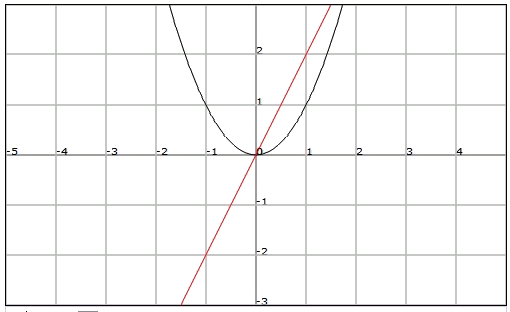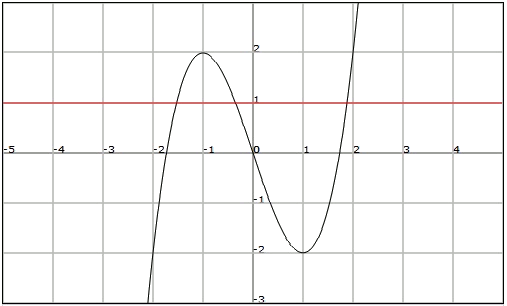In the graph of a function we can observe certain characteristics of the functions that give us information about its behaviour.
Observe the graphs of the functions and

For the function , we observe that we can trace at least one horizontal straight line ( = constant) that the cuts the graph in more than one point.
For example, if we consider the horizontal straight line , we see that there are two points in the domain of , , and , with have the same image .
On the other hand, any horizontal straight line traced on the graph of the function will cut its graph only once. Therefore, there aren't any two elements in the domain of that have the same image.
A function is injective if every two different elements in its domain have two different images, that is, if it is satisfied that:
Therefore we observe that the function is injective while is not.
If we consider again the functions and , we observe that:
The graph of the function lies on the positive side of the -axis, thus .
On the other hand, the graph of the function is on all the real numbers, thus .
A function is exhaustive if its graph coincides with the set of the real numbers, that is, if we have that:
We have therefore that the function is not exhaustive and that the function is exhaustive.
Finally
A function is bijective if it is injective and exhaustive simultaneously.
This way the function of the example is bijective while the function is not.
Example
Determine if the function represented in the following figure is injective, exhaustive or bijective:

First, we should realize that the function is not injective since we can trace the straight line , cutting the graph in more than one point. This means that different values of the independent variable have the same image.

On the other hand, the function is exhaustive since all the real numbers are in its image, that is .
Obviously the function will not be bijective since it is not injective.



